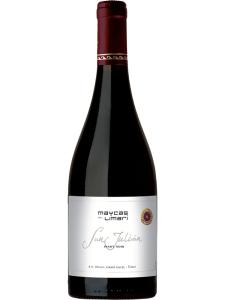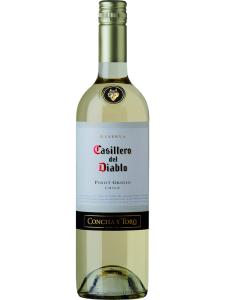Limari Valley is one of the northernmost winegrowing regions in Chile, located 200 miles (320km) north of the Chilean capital, Santiago. This location places it at a latitude of 30° south, well beyond the latitudes traditionally associated with winegrowing. To provide context, the equivalent parallel in the Northern Hemisphere passes through Egypt, Iraq and northern Mexico. Despite all of this, Limari Valley is not Chile's most northerly region; a further 50 miles (80km) north lies the Elqui Valley.
Chardonnay is the star grape variety in Limari Valley wines, producing wines with a certain minerality thanks to the relatively cool climate and the limestone content in the soil. Syrah is also successful here, producing savory styles in the cooler, coastal vineyards and fuller, fruit-driven styles in warmer, inland sites. Cabernet Sauvignon and Merlot – Chile's most successful varieties also feature, alongside the Chilean signature grape, Carmenere.
© Matt Wilson/Wines of Chile
Because of its proximity to the equator (not to mention the world's driest desert – the Atacama), the Limari Valley is hot and relatively dry. It is cooler and greener than the land on either side of it, thanks almost entirely to the narrow gap the Limari River has created in the coastal hills. On either side of this gap, the coastal ranges rise to almost 2300ft (700m), preventing cooling Pacific breezes from reaching inland areas. On summer mornings, the coastal "Camanchaca" fog creeps through the gap and up into the valley. The fog refreshes the local vineyards with cool, moist air for much of the morning, until the sun has risen above the Andes and begins re-establishing the warm, dry, desert-like conditions with which northern Chile is more often associated. This cooling effect is very similar to that that enjoyed by California's coastal wine regions, most famously Napa Valley.
Rainfall here averages just four inches (101mm) per year and, even with the moisture brought by the Camanchaca, all Limari Valley vineyards rely on drip irrigation to some extent. This is drawn from the Hurtado and Grande rivers (these merge to form the Limari River), which bring cool, fresh meltwater down from the Andes. Water is such a precious substance in this part of the world that each river has been dammed to create embalses (reservoirs). The Embalse Recoleta controls the flow of the Hurtado; the Embalse Palomar controls that of the Grande.
Historically, the grapes grown in Limari's vineyards were either eaten as table grapes or were distilled into Chile's trademark brandy, Pisco (neighboring Peru also claims Pisco as its own). Even today, as winemakers continue to seek out new spots within the valley, less than 20 percent of the region's grape output is used for quality wine production.
The limestone soil types found in the Limari Valley are rare in Chilean terroirs. They are the result of former seabeds that have been raised by tectonic activity into the Andes, then gradually washed downstream by glaciers and rivers to the plains and valleys below.




